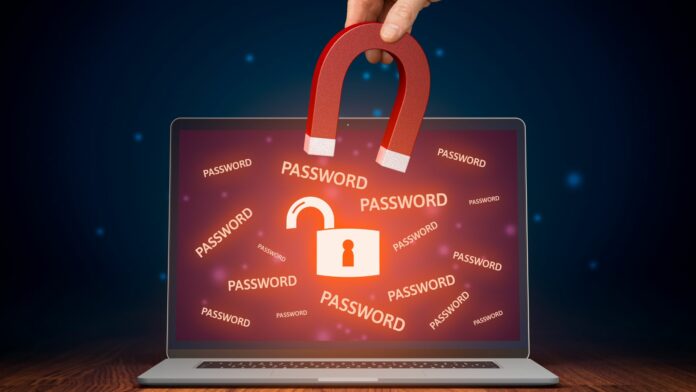Let’s talk about something that’s been giving organizations around the globe some serious headaches lately – data leaks. As we dive deeper into the realm of AI and technology, the risk of data leaks lurking around every corner becomes more and more real. I mean, just take a look at the news – it seems like there’s a new data breach reported almost every other day!
Now, I’m no cybersecurity expert, but I’ve been doing some digging into this whole data leak phenomenon, and let me tell you, it’s a real eye-opener. From accidental slip-ups to downright malicious attacks, these data leaks come in all shapes and sizes, and they can hit organizations hard where it hurts the most – their wallets.
Just think about it – in 2021 alone, the Identity Theft Resource Center reported a whopping 70% increase in data compromises! And get this, the average cost of a data breach skyrocketed to a staggering USD 4.45 million in 2023. That’s a 15% jump in just three years! Talk about a wake-up call, right?
Just imagine, if your entire set of data gets out in public, how much bad impact it can give to your business. In some cases, you may lose your entire business.
The Anatomy of Data Leaks
Data leaks are a serious problem in the digital world, lurking like silent phantoms and posing different challenges for organizations. They can happen in many ways, whether it’s accidental disclosures or deliberate attacks. The consequences of these leaks are significant and can impact the integrity of organizations.
1. The Human Touch: Picture this: an email sent to the wrong person, a USB drive left behind, or someone getting hold of important login details by mistake. These everyday slip-ups, known as human error, are often the main reason behind data leaks. They can turn a normal workday into a cybersecurity disaster in no time.
2. The System’s Symphony: Even the strongest systems can sometimes fail due to vulnerabilities. A small weakness in the defenses, a flaw in the code – these are the openings that cybercriminals exploit to break through our digital defenses.
3. The Shadowy Silhouette of Third-Party Risks: rust is delicate, especially when it involves giving access to third parties. If they have a breach, it can lead to one in your own system, as seen in the Marriott data incident.
4. The Insider Threat: At times, the threat comes from within. Malicious insiders, motivated by personal grudges or financial incentives, can cause serious damage by intentionally stealing or deleting sensitive data.
Protecting your data fortress: Strategies to Stop Data Leaks
Don’t despair, for where there are challenges, there are also opportunities. Here are some tactics to strengthen your defenses against the looming threat of data leaks:
1. Vigilance in the Cloud: The cloud, a realm of boundless possibilities, can swiftly turn into a quagmire of data insecurity if left unchecked. Validate your cloud storage configurations regularly, ensuring they remain impervious to malevolent incursions.
2. The Automation Arsenal: As the battlefield expands, so must our arsenal. Automation, with its precision and swiftness, can help enforce stringent security protocols, thereby safeguarding our digital dominion from potential breaches.
3. Sentinel Against Third-Party Perils: While alliances are necessary, they also entail risks. Monitor third-party access with hawk-like precision, for their vulnerabilities could be the chink in your armor.
Fortifying Our Defenses: A Call to Action
As guardians of the digital realm, it is incumbent upon us to fortify our defenses and safeguard our organizations from the ravages of data leaks. IBM’s research reveals that organizations embracing security AI and automation can save an average of USD 1.76 million compared to their counterparts.
- Educate Employees: Train your staff about the importance of data security and how to recognize and prevent potential threats, including phishing attacks and social engineering tactics.
- Implement Access Controls: Limit access to sensitive information to only those who need it for their job roles. Use techniques like role-based access control (RBAC) to ensure employees only have access to the data necessary for their tasks.
- Encrypt Data: Utilize encryption techniques to scramble sensitive data, making it unreadable to unauthorized users. This way, even if data is compromised, it remains protected.
- Monitor and Audit: Keep a close eye on data access and usage through monitoring tools and regular audits. This helps detect any unusual activity or potential breaches in real-time.
- Secure Endpoints: Protect devices like computers, smartphones, and USB drives with security software, firewalls, and strong passwords. Implementing device encryption and remote wiping capabilities adds an extra layer of security.
- Establish Clear Policies: Develop and enforce strict data security policies outlining acceptable use of company resources, handling of sensitive information, and consequences for policy violations.
- Secure Third-Party Relationships: Vet and monitor third-party vendors and partners who have access to your data, ensuring they adhere to stringent security standards and protocols.
- Conduct Regular Security Training and Testing: Keep employees up-to-date with ongoing security training sessions and conduct regular simulated phishing exercises to assess their awareness and response to potential threats.
- Respond Quickly to Incidents: Have a well-defined incident response plan in place to effectively manage and mitigate the impact of data breaches. This includes steps for containment, investigation, and recovery.
- Stay Informed and Adaptive: Keep pace with the evolving threat landscape by staying informed about emerging cybersecurity risks and trends. Continuously evaluate and update your security measures to stay one step ahead of potential data leaks.
Let us heed the lessons gleaned from past breaches, investing in incident response planning, employee training, and robust threat detection mechanisms. By bolstering our security infrastructure and fostering a culture of vigilance, we can stem the tide of data leaks and chart a course towards a safer, more resilient digital future.
Sources:









